Date Published July 10, 2019 - Last Updated December 17, 2019
It is rare to hear an IT organization complain that they have too much budget and that their employees are trained too well. What is more common is that our employees are overworked, underpaid, and far too busy to be fully trained. Our ITSM systems have helped augment our workforce and standardize the day-to-day business of IT. That standardization and autonomy can lead to monotony and repetitiveness that drives down motivation and morale.
How do we make ITSM fun again? One solution is to gamify our ITSM. Gamification is a process where we take elements from games and game systems and add them into our workflows. With gamification, our goal is to change that work to engage our users and motivate them to want to continue using the system. Gamification systems in ITSM excel at livening up the monotony of day-to-day tasks. These systems work across the organization but really shine at our service-desk and lower tier support levels.
How do we make ITSM fun again?

The topic isn’t necessarily a new one in ITSM. We’ve discussed organizational fit and determining how to gamify our organization. But once we’ve decided that gamification is worth a try, what steps can we take to get started? Knowing that the purse strings are tied tight, gamification allows us to incentivize and reward work with minimal costs.
Create Diverse Teams
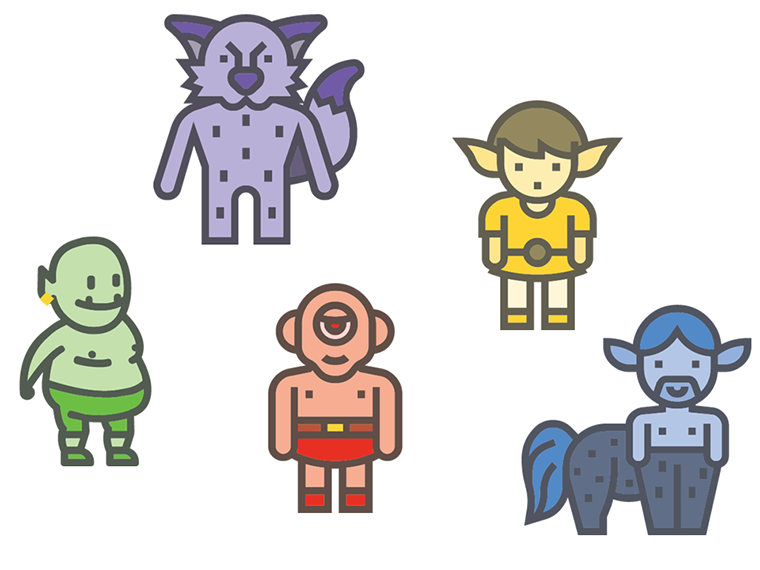
In IT, our teams can end up isolated and siloed off into their functional groups. This can lead to weird group dynamics and an us-vs-them attitude when escalating or re-assigning tickets. Creating secondary “game teams” that cross functional groups, shift-schedules, and managerial titles allows our workers to better understand how our organization works but also to motivate each other.
While individual progress is important, a single worker may lack incentive to perform well, especially if they find themselves low on points or near the bottom of the rankings. Teams hold each other accountable to make sure deadlines are met and that work performance remains high.
When creating teams, you can use any theme you want, something from pop culture, history, literature, or even something close to your company. In this example, we use mythological creatures, centaurs, goblins, giants, elves, and werewolves.
Use Achievements and Points
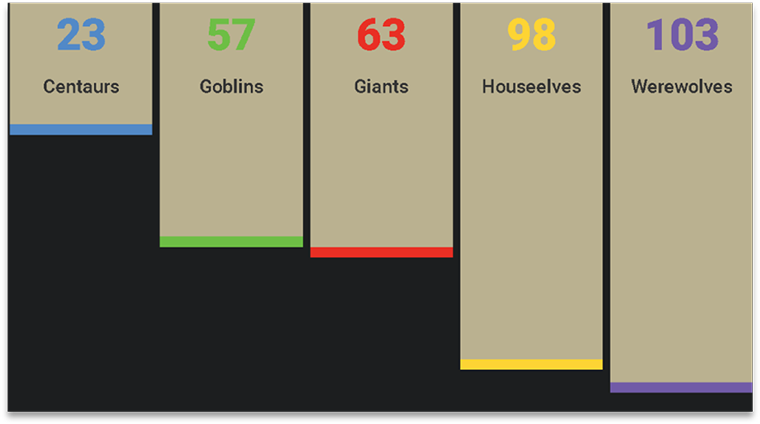
Once you have teams created, you will want them to be doing something. Creating a point system allows you to generate a digital currency that can be used to reward the good and penalize problematic work to highlight areas for improvement.
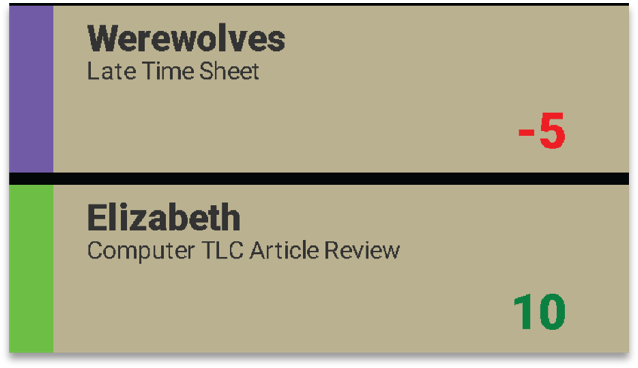
Our goal is to motivate our employees and make things fun. So, it is usually best to callout positive achievements at the individual level but to keep the negative points at the team level. For example, an employee editing a knowledge article might get ten points associated with their name, but an employee that doesn’t enter a timesheet by the deadline may lose their team five points. It isn’t necessary to use negative points at all, but small penalties can help teams self-regulate.
| Add Points | Lose Points |
|---|
| Good customer feedback |
Bad customer feedback |
| High-quality ticket |
Bad customer feedback |
| Taking an open shift |
Late to work |
| Going above and beyond |
Late timesheet |
Reward Your Players
Rewards are an important part of a gamification system because they are the “what’s in it for me” that motivates our teams to participate. A reward can be something to work toward such as a trophy, a pizza party, or company swag. But a reward can also be entirely arbitrary. Avatar systems allow for the creation of digital rewards that have a lower cost. An intricate avatar system can feature clothing, hats, backgrounds, tattoos, and items that you could even tie into your point system to let workers “purchase” them.
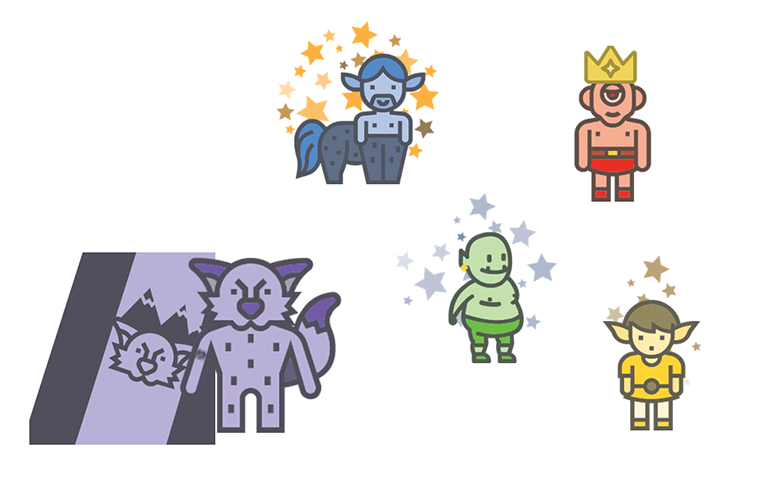
Another option is to make your system a leaderboard that provides special items to higher performers. The example above shows star backgrounds for the top three individual performers and a crown for the team in the lead. “Fighting for the crown” can be used as a motivator to drive teams to engage with the system.
Put It All Together in a Dashboard
One of the major motivators in a gamification system is being able to track progress. By creating a dashboard, you can show a points feed, team progress, point totals, and even avatars. Transparency allows peer learning from seeing what gets points, and what loses points, and how many points a team needs to take the lead.
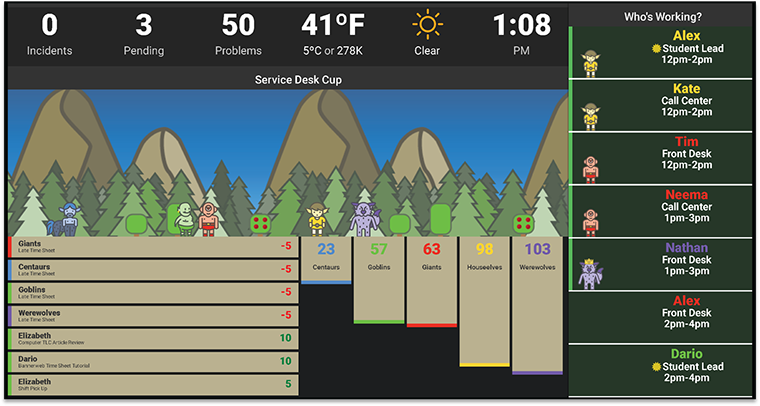
Getting Off the Ground
Gamification is not prescriptive and definitely not one size fits all. What works well for one company may flounder at another. The key is to find what works for your users and modify as needed. A system can be as simple as a corkboard with papers tacked up to it, a shared spreadsheet, a weekly email, a buildout within your ITSM system, or a separate web app that you build. The key is getting started and trying things out and not losing sight of your original goal, to motivate and positively engage your workforce!
Join Chris at Service Management World for a pre-conference workshop on customer-focused IT services.
Join us!
Chris Chagnon is an ITSM application and web developer who designs, develops, and maintains award-winning experiences for managing and carrying out the ITSM process. Chris has a Master of Science in Information Technology, and a bachelor’s degree in Visual Communications. In addition, Chris is a PhD Candidate studying Information Systems with a focus on user and service experience. As one of HDI’s Top 25 Thought Leaders, Chris speaks nationally about the future of ITSM, practical applications of artificial intelligence and machine learning, gamification, continual service improvement, and customer service/experience. Follow Chris on Twitter
@Chagn0n.